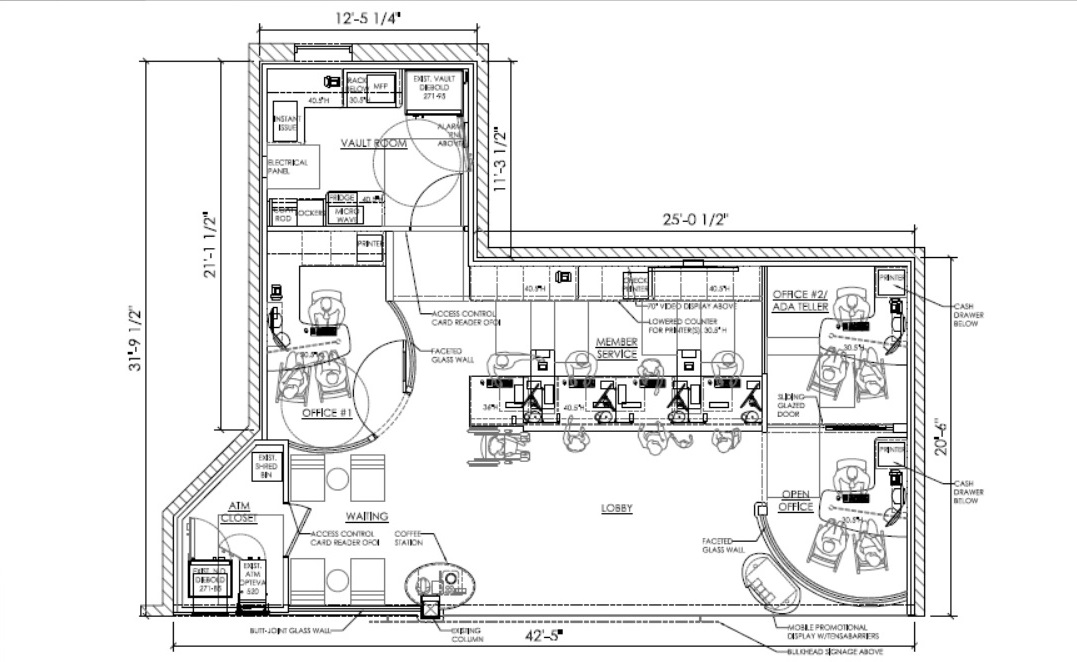Branch transformations are more important than ever before for both bank and credit unions. The quickly changing financial stage and adoption of digital tools and platforms is influencing how consumers interact with branches. Physical branches must evolve to remain relevant and efficient. Why? Consumer expectations, preferences and needs change. Consider the following branch transformation insight:
Reduced Footprints for Increased Productivity
The footprints of contemporary credit unions and banks are becoming more compact and efficient. The days of expansive lobbies and never-ending teller lines are a thing of the past. Rather, financial institutions are concentrating on designing areas that are efficient, hospitable, and useful. Many are adopting the smaller but more innovative enviroments in which to interact. Smaller branches still offer excellent service delivery while cutting expenses on overhead. This change enables banks and credit unions to better manage resources and meet the demands of their customers.
Fintech Technology Implementation
Fintech advances simplify operations and improve customer experience through automated service points, digital signage, interactive kiosks, and enhanced security systems. It also helps branch staff move beyond the Universal Teller model and poise themselves as financial consultants and advocates of financial literacy. Financial organizations may now provide smooth, omnichannel experiences that connect online and offline banking thanks to these technologies.
The Future of Branch Design
Financial institutions that hire a strategic partner who is immersed in the financial industry and understands how employees and consumers engage in a space is key. FSI, for example, has remained ahead of cutting age technology and branch transformations for over 40 years. The purposeful use of hoteling space, video conference rooms, ITM technology, virtual queuing kiosks, wealth management stations, tech bars, and cashless branch operations are emerging trends. Couple these trends with a smaller footprint and securing a high-traffic retail location sets the branch up for success.
Many financial institutions whose branch is already in a high-traffic location are opting to sub-divide their existing branch space. This allows the bank or credit union to operate a smaller footprint in one area of the building while obtaining a local business partner (i.e., medical practice, retail store, or insurance agency) to lease the remaining space providing additional income to the financial institution’s bottom line.
What’s Next in Branch Design?
Retail banking designs may also undergo a revolution thanks to generative AI. Designing and building more dynamic and personalized environments by utilizing AI is an option. AI is able to forecast future trends, enhance branch design, and serve customers by analyzing their behavior and preferences.
Adding artificial intelligence (AI)-powered chat bots and virtual assistants, which offer immediate assistance and personalized recommendations, to branch operations might also further improve consumer interactions.
In conclusion, this branch transformation insight is just the tip of the iceberg as one should also take into account operating procedures, emerging technology resources and implementation, and staffing allocations. However, the experience for the consumer should always be the same whether it is a digital or physical encounter.
View our Branch Transformation Gallery. For more information on our branch remodel or transformation program and our 7-day transformation offering, contact us today.



Leave a Reply